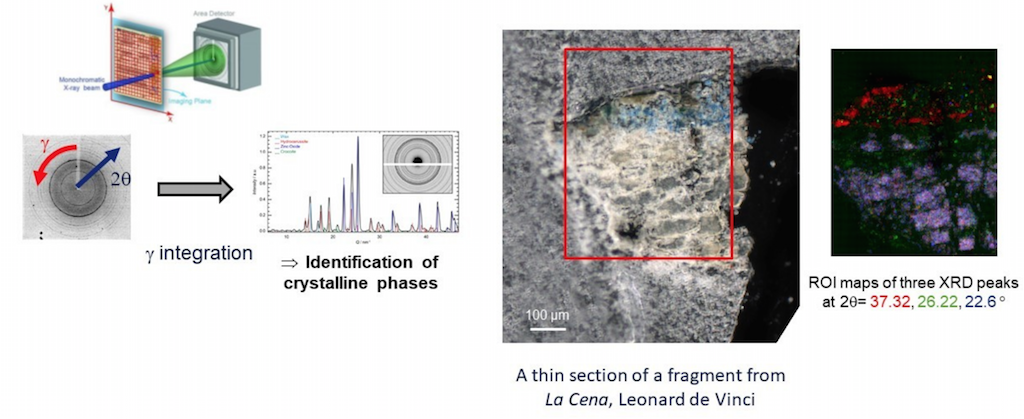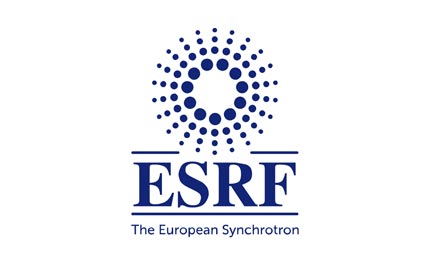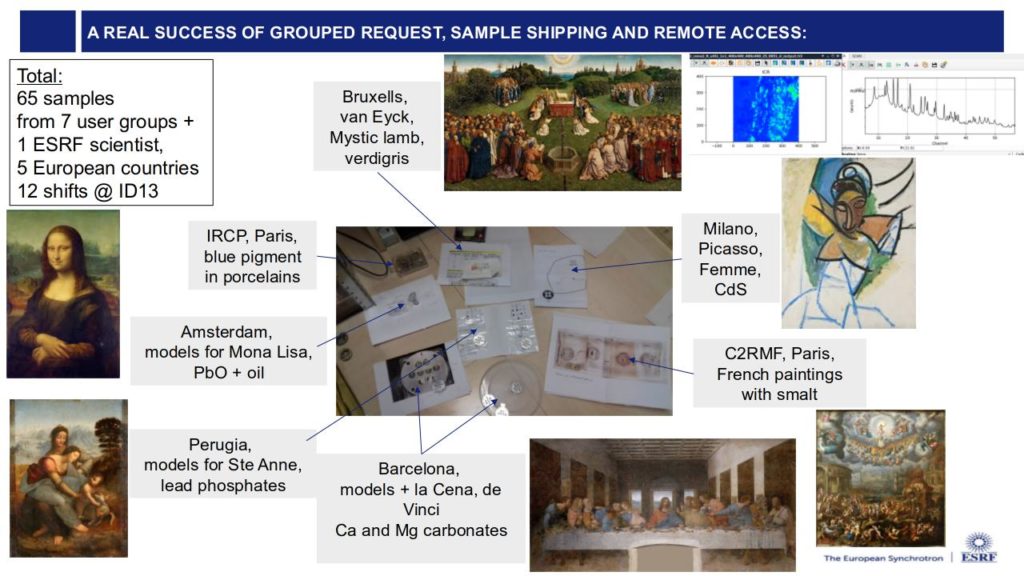Use Case 6 – Analysing 2D uXRD maps for cultural heritage samples


Improving the efficiency of 2D uXRD experiments (many different users, a possible regular beamtime, remote experiment), would help to have a dedicated Jupyter notebook for data processing. It would be a good way:
- To save time;
- To record which map has already been processed and how;
- To have a coherent data processing between users and between sessions, and also for possible users who would like to reuse data after the embargo period.
Use Case Action Flow:
- Extract data
- Radial integration
- Combine maps
Impacts from the implementation:
The goal will be to perform 2D µXRD maps on painting fragments from various historical paintings in a reproducible and user friendly manner for non-expert synchrotron users.

Generalisation of the use case:
It could be useful for any 2D µXRD mapping experiments.
Partners:
All synchrotrons doing 2D µXRD mapping of heterogeneous samples e.g. Petra-II DESY, DIAMOND, ELETTRA, SOLEIL
Resources:
h5py, pyFAI, Jupyter notebooks
Source code >> https://gitlab.esrf.fr/loic.huder/juno
Contact person:
—
Should you have questions, comments or suggestions related to this use case, please write an email to use-case@panosc.eu